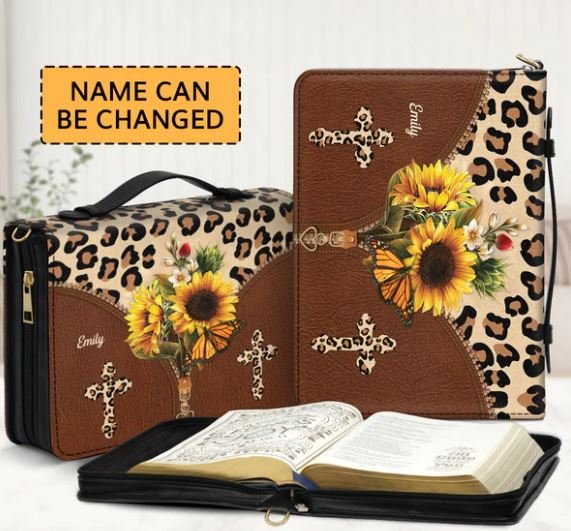From Exodus to Resurrection: Unveiling the Profound Christian Significance of Matzo
As an Amazon Associate, I earn from qualifying purchases. This page contains affiliate links. If you choose to make a purchase after clicking a link, I may receive a commission at no extra cost to you.
Visit our Holy Spirit Gear Store- - - - - ->>> HERE <<< - - - - - - New items Weekly
In the heart of Christian and Jewish traditions, Matzo bread carries a symbolism that transcends its simple ingredients. As a Christian, diving into the depths of Matzo's meaning not only enriches our understanding of our Judaic roots but also illuminates the redemption narrative central to our faith. This unleavened bread, crisp and marked with stripes, speaks volumes of the Passover story, drawing a profound parallel to the life, death, and resurrection of Jesus Christ. In this exploration, let's unravel the layers of significance that Matzo holds, weaving through Scriptures and seeing how this ancient bread still speaks to our modern Christian journey.
Matzo in the Passover – The Jewish Foundation
The significance of Matzo bread is deeply rooted in the Jewish tradition, particularly in the story of the Exodus, an event that marks a pivotal moment in Jewish history and faith. This story, foundational to both Jewish and Christian traditions, serves as a bridge that connects us to our shared spiritual heritage.
The Exodus Story
At the heart of the Passover narrative is the Exodus story, a tale of liberation, faith, and divine intervention. Chronicled in Exodus 12, this account tells of the Israelites' miraculous departure from Egypt, where they had been enslaved for centuries. Under the leadership of Moses, they embarked on a journey of freedom, guided by God's mighty hand.
The preparation for their departure was marked by specific instructions from God, including the making and eating of unleavened bread, Matzo. This was not a matter of culinary preference but a symbol of their imminent flight. In their haste to leave Egypt, there was no time to let their bread rise. Instead, they baked unleavened bread, embodying both the urgency of their escape and their absolute reliance on God. This haste reflects a profound act of faith: the readiness to leave at a moment's notice, trusting in God's promise of deliverance.
Scriptural References
The significance of Matzo is further emphasized through God's commandments regarding its consumption. Exodus 12:15-20 mandates the eating of unleavened bread for seven days as a commemoration of the Exodus. This period, known as the Feast of Unleavened Bread, is a time for the Jewish people to remember their liberation from slavery and the haste of their departure from Egypt. The absence of leaven, which can symbolize corruption and sin, in these breads signifies purity and a break from the past. This commandment is a direct instruction from God to observe this practice as a perpetual ordinance, linking the generations of Israelites across time in a shared memory of God's salvation.
Deuteronomy 16:3 refers to Matzo as the "bread of affliction," a reminder of the suffering and oppression the Israelites endured in Egypt and the haste with which they fled, leaving no time for their dough to rise. This bread of affliction, however, is also a symbol of their liberation, a tangible reminder of the transition from slavery to freedom, from despair to hope. It serves as a lesson in humility, gratitude, and the constant presence of God in their journey towards the promised land.
In these Scriptural references, Matzo stands as a powerful symbol, embodying themes of deliverance, faith, and remembrance. For Christians, understanding the origins and significance of Matzo in the Passover story deepens our appreciation of our faith's Judaic roots. It also sets the stage for exploring the profound parallels between the Passover and the life, death, and resurrection of Jesus Christ, enriching our spiritual journey and our connection to God's overarching narrative of redemption.
Symbolism of Matzo Bread in Christian Theology
The journey from the Old Testament's shadows into the New Testament's reality brings us to a profound understanding of how Matzo, the unleavened bread, is imbued with rich symbolism in Christian theology. This section explores the significant parallels between the Jewish traditions of Passover and the Christian understanding of Jesus Christ's sacrifice.
Christ as Our Passover Lamb
The narrative of the Passover lamb in Exodus 12:3-11, where the Israelites were commanded to sacrifice a lamb without blemish and mark their doorposts with its blood, foreshadows the ultimate sacrifice of Jesus Christ. This act of faith protected the Israelites from the final plague, signifying salvation and deliverance. In the New Testament, this symbolism is fulfilled in Jesus Christ, referred to as our Passover Lamb in 1 Corinthians 5:7. Paul's epistle to the Corinthians explicitly draws this connection, highlighting that Christ, through His sacrifice, has become the means of our salvation, sparing us from eternal death.
The breaking of Matzo during Passover gains an added layer of meaning in the context of Christ's crucifixion. During the Last Supper, Jesus broke bread, akin to Matzo, and declared it His body, given up for humanity (1 Corinthians 11:24). This act of breaking bread becomes a profound symbol of Jesus' body, broken for the sins of the world. Just as the Matzo is striped and pierced, so was Christ, whose body was broken and wounded for our transgressions. This parallel not only deepens the Christian understanding of Jesus' sacrifice but also connects us with the Jewish tradition of remembering God's deliverance through tangible symbols.
Unleavened Bread as a Symbol of Sinlessness
In Jewish tradition, leaven is often seen as a metaphor for sin and corruption, swelling bread in a manner that can symbolize pride or moral failing. This concept is carried into Christian theology, where the unleavened Matzo takes on additional significance as a symbol of Christ's sinlessness. In 1 Corinthians 5:8, Paul urges believers to celebrate the festival not with the old leaven of malice and evil but with the unleavened bread of sincerity and truth. This exhortation draws a direct line between the unleavened Matzo and the pure, sinless nature of Christ.
Christ's life, devoid of sin, mirrors the unleavened nature of Matzo, offering Christians a model of purity and holiness to aspire to. The absence of leaven in this bread speaks to the purity of Jesus' sacrifice, untainted by sin, offering redemption to humanity. As Christians partake of communion, the unleavened bread serves as a reminder of Christ's pure, blameless sacrifice, urging them to shed the leaven of sin and embrace a life of righteousness.
Through these connections, the symbolism of Matzo bread in Christian theology invites believers to reflect on the depth of Christ's sacrifice and the call to live a life of purity and devotion. The layers of meaning behind the unleavened bread of Passover enrich the Christian faith, bridging traditions and deepening the spiritual journey of followers of Christ.
Matzo During the Last Supper
The Last Supper, a pivotal moment in Christian tradition, holds deep connections with the Passover meal, infusing the ritual of Matzo with profound Christian significance. This section delves into the symbiotic relationship between the Last Supper and the Passover meal, exploring how Matzo serves as a bridge between the Old Covenant and the New Covenant established by Jesus Christ.
The Last Supper as a Passover Meal
The Last Supper, as described in the Gospels, is deeply intertwined with the Jewish Passover meal, commemorating the Israelites' liberation from Egyptian bondage. This meal, which Jesus shared with His disciples, was steeped in the symbolism and traditions of Passover, including the consumption of unleavened bread. The synoptic Gospels (Matthew, Mark, and Luke) present the Last Supper within the context of Passover, suggesting that the meal included elements typical of the Passover Seder, such as Matzo.
The use of unleavened bread, or Matzo, by Jesus during the Last Supper is significant. While the Gospels do not explicitly state that Matzo was the bread used, the timing of the Last Supper during the Feast of Unleavened Bread and the Passover season strongly suggests its use. Furthermore, the qualities of Matzo—unleavened and marked with stripes—mirror the sinlessness and suffering of Christ, reinforcing the connection between the Passover meal and the Last Supper.
Breaking of the Bread and the New Covenant
One of the most poignant moments of the Last Supper is Jesus' breaking of the bread. Luke 22:19-20 describes Jesus taking bread, giving thanks, breaking it, and giving it to the disciples, saying, "This is my body given for you; do this in remembrance of me." This act of breaking the bread, likely Matzo, is laden with symbolism, signifying Jesus' body, broken for the salvation of mankind. The breaking of Matzo at the Last Supper becomes a physical manifestation of Jesus' impending sacrifice, an act that would establish a New Covenant between God and humanity.
The significance of this moment extends beyond the act of breaking bread; it signifies the inauguration of the New Covenant, prophesied in Jeremiah 31:31-34. This New Covenant, sealed by Jesus' sacrifice, promises the forgiveness of sins and a personal, indwelling relationship with God. The use of unleavened bread, representing purity and sinlessness, at this moment underscores the perfect nature of Jesus' sacrifice, the ultimate Passover Lamb who takes away the sins of the world.
In breaking the Matzo and declaring it His body, Jesus invites His followers into a profound understanding of sacrifice, redemption, and the transformative power of God's love. This act not only commemorates Jesus' sacrifice but also serves as a call to remember and relive the liberation and salvation He offers. The Matzo, once a symbol of the Israelites' hasty flight from Egypt, now embodies the sinless sacrifice of Christ, offering new life and freedom from sin to all who believe.
Through the Last Supper, the Matzo bread takes on new significance, becoming a symbol of Christ's body, His sacrifice, and the New Covenant. This deepens the Christian understanding of Passover, bridging the Old and New Testaments and inviting believers to reflect on the depth of Jesus' love and the profound mystery of redemption.
Matzo in Contemporary Christian Practice
The rich tapestry of Christian faith is woven with threads of ancient traditions and modern practices. Matzo, with its deep biblical roots and profound symbolism, serves as a bridge between past and present, offering Christians today a tangible connection to the foundational stories of faith. This section explores how Matzo can enrich contemporary Christian practice, serving both as a symbol of our shared heritage with Judaism and as a tool for teaching and reflection.
Observing Traditions with Understanding
Christianity, while distinct in its beliefs and practices, shares a deep spiritual lineage with Judaism. This shared heritage is most vividly expressed in the observance of biblical feasts and practices, including the use of Matzo. Remembering our Judaic roots through these observances is not merely an act of historical recall but a practice of deep spiritual significance. It reaffirms the continuity of God's redemptive plan from the Old Testament through the New Testament.
Incorporating Matzo into Christian observances such as Easter or communion can serve as a powerful reminder of the Passover lamb and the ultimate sacrifice of Jesus Christ. When Christians partake of Matzo during these times, they are invited to reflect on the sinlessness of Christ, His body broken for us, and the haste with which the Israelites prepared to leave Egypt, mirroring the urgency and immediacy of our response to God's call. This practice can deepen the faith experience, providing a multisensory engagement with the story of salvation and redemption.
Matzo as a Teaching Tool
Beyond its role in ritual observance, Matzo serves as an invaluable teaching tool within the Christian community. Its simplicity and symbolic richness make it an effective means to communicate the essentials of the gospel—Jesus’ life, death, and resurrection—to believers of all ages, especially children and new believers.
For children, the tangible nature of Matzo can help bring to life the stories of the Bible. Breaking Matzo while recounting the Last Supper or the Exodus story can help children understand the themes of sacrifice, deliverance, and redemption in a more concrete way. This hands-on approach to learning not only enriches their knowledge of biblical events but also helps instill a deeper understanding of the significance of Jesus' sacrifice.
For new believers, Matzo can serve as a powerful symbol of their new journey in faith. Just as Matzo is made without leaven, signifying the putting away of the old leaven of sin, new believers are called to a new life in Christ, cleansed from sin. Explaining the symbolism of Matzo can help new believers grasp the transformative power of the gospel, encouraging them to live lives marked by purity and devotion to God.
Through its use as a teaching tool, Matzo can engage believers in a deeper exploration of their faith, connecting them to the biblical narrative in a meaningful way. Whether through formal religious education or informal discussions at home, Matzo can help bring the story of God’s redemption to life, fostering a deeper, more vibrant faith.
In contemporary Christian practice, then, Matzo stands as a symbol of our shared heritage with Judaism, a reminder of Christ's ultimate sacrifice, and a tool for teaching and reflection. Its incorporation into modern faith practices enriches the Christian journey, connecting believers more deeply to the roots of their faith and to the ongoing story of God's redemption.
Personal Reflections and Application
In the quiet moments of reflection, the symbolism of Matzo speaks to the core of our Christian walk. This simple, unleavened bread, emblematic of both a historical narrative and a profound spiritual truth, invites us into a deeper contemplation of sin, purity, and redemption. Through personal and communal engagement with Matzo, we find not only a connection to our faith's roots but also a powerful directive for our lives today.
Reflecting on Sin and Redemption
The story of Matzo, interwoven with the themes of haste, affliction, and deliverance, mirrors our own experiences with sin and redemption. As the Israelites left Egypt in haste, without the leaven that represented the corruption of their past, so are we called to leave behind the sin that ensnares us. This act of leaving Egypt, marked by the eating of unleavened bread, symbolizes a departure from a life of bondage to sin and entry into a covenant relationship with God.
In personal meditation, Matzo challenges us to examine the "leaven" within our lives—the habits, thoughts, and actions that keep us from fully embracing the life of purity and devotion to which we are called. It reminds us that redemption is both a moment and a journey; just as the Israelites were instantly freed from slavery but spent years learning to live as a free people, so we celebrate our instant salvation through Christ while working out our salvation in fear and trembling.
Living Unleavened Lives
Inspired by the purity of Matzo, Christians are called to live "unleavened lives," free from the corruption of sin. This call is not about legalistic purity but about a heart transformation that reflects the inner working of God’s grace. Living an unleavened life means seeking God's kingdom and righteousness above all, allowing the Holy Spirit to refine and purify us from the inside out.
The purity of Matzo symbolizes the sinless nature of Christ, our Passover Lamb, who invites us to partake in His nature. As we consume the unleavened bread, we are reminded of His body given for us, broken to set us free from the bondage of sin. This act of remembrance is not passive; it demands a response—a commitment to live in the freedom He has secured for us, resisting the old leaven of malice and wickedness, and embracing the unleavened bread of sincerity and truth.
Recommended Books to Further Study the Subject
The journey through the symbolism of Matzo—from the ancient story of the Exodus to the Last Supper, and into our contemporary Christian practice—reveals a rich tapestry of spiritual truth. Matzo, in its simplicity and depth, serves as a bridge between our Judaic roots and our Christian faith, between the historical narrative of liberation and our personal stories of redemption.
As we reflect on the significance of Matzo, let us embrace the call to live unleavened lives, marked by purity, sincerity, and a profound commitment to follow Christ. Let the breaking of Matzo continue to remind us of the body of Christ, broken for our freedom, and inspire us to live in that freedom, honoring the sacrifice made on our behalf.
In this way, Matzo becomes more than a ritual element or a teaching tool; it becomes a living symbol of our faith journey, urging us onward in our pursuit of holiness and our celebration of the redemptive work of Christ. Through the lens of Matzo, we see not only our past but our present and future in Christ—a future filled with hope, redemption, and the promise of eternal life.















